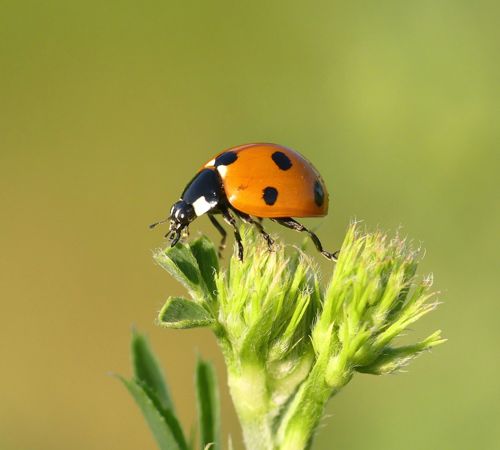Seven-spotted ladybug, Seven-spotted ladybird
Scientific Name: Coccinella septempunctata
Order & Family: Coleoptera, Coccinellidae
Size: Typically 5.5 to 8.0 mm (0.22 to 0.31 inches) in length.

Natural Habitat
Gardens, agricultural fields, meadows, forests, and other areas with vegetation where aphids and other small insects are present. They are especially common in areas with ample host plants for their prey.
Diet & Feeding
Primarily carnivorous, feeding on soft-bodied insects such as aphids, scale insects, mites, and other small arthropods. Both adult ladybugs and their larvae are voracious predators.
Behavior Patterns
Ladybugs are often seen foraging for prey on plants. When threatened, they can excrete a foul-smelling, yellowish fluid (reflex bleeding) from their leg joints to deter predators. They undergo complete metamorphosis, with distinct egg, larval, pupal, and adult stages. Many species overwinter as adults, often aggregating in sheltered locations.
Risks & Benefits
Ladybugs are considered highly beneficial insects, particularly in agriculture and gardening, as they are natural predators of various pest insects, significantly reducing the need for chemical pesticides. There are generally no risks to humans, as they do not sting or transmit diseases. In some rare cases, they might bite if handled roughly, but it's harmless. In some regions, the invasive Harlequin ladybug (Harmonia axyridis) can outcompete native ladybug species or become a nuisance by overwintering indoors, but the species pictured (Coccinella septempunctata) is generally considered beneficial.
Identified on: 9/21/2025